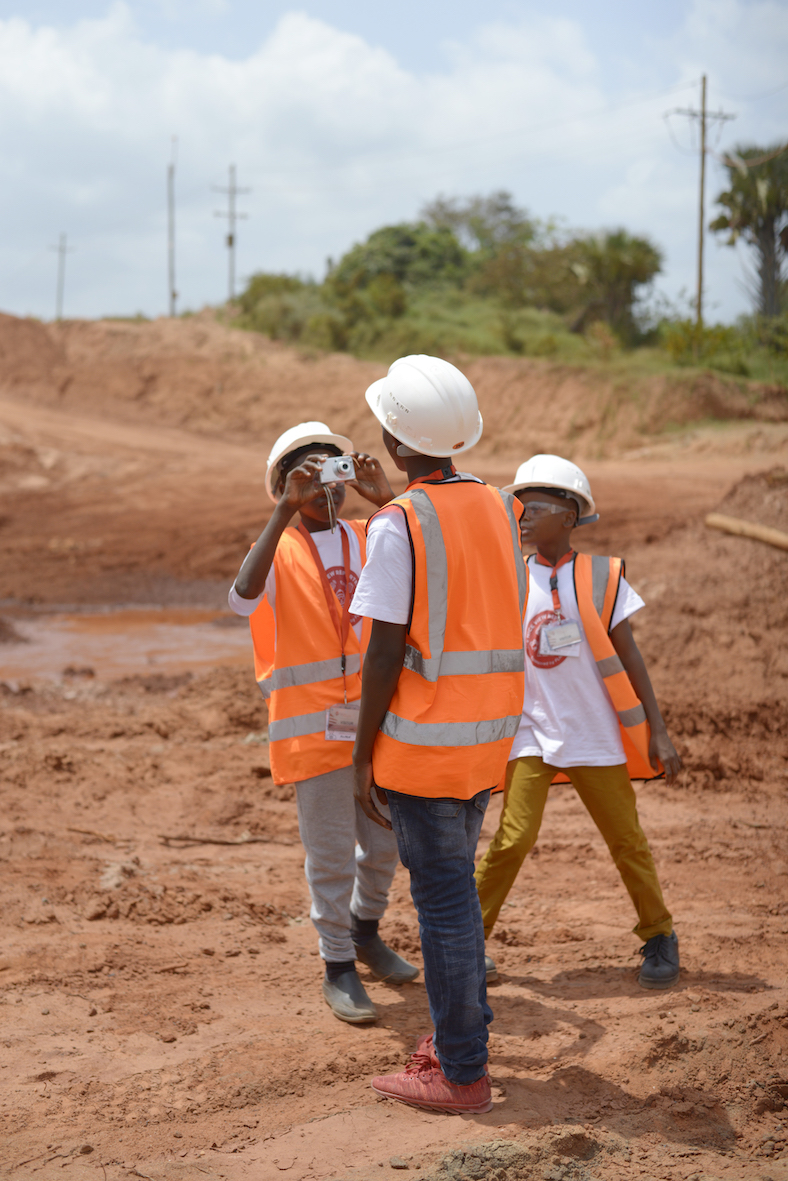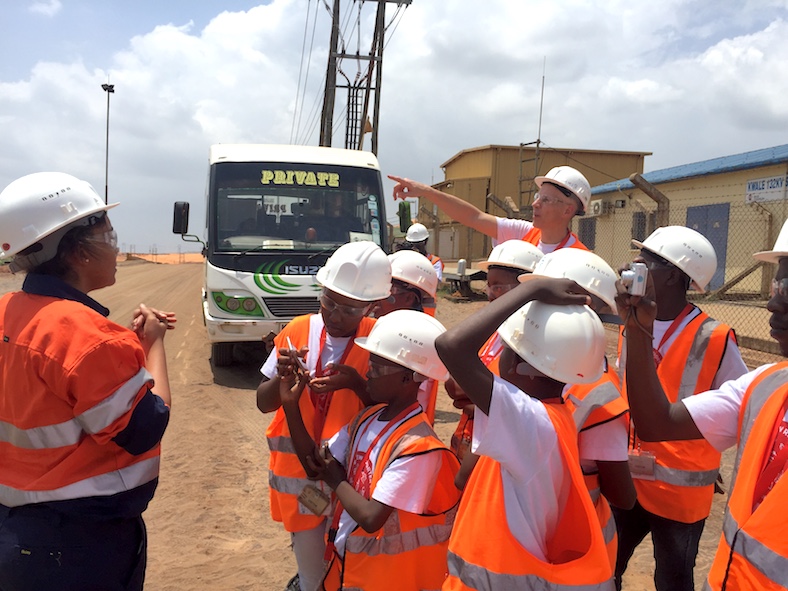A Visit to the Base Titanium Mine
It was on Wednesday morning when our Nice View Reporter team visited the Base Titanium Mine which is Kenya’s largest mine. We started our journey at 9:00 am using two cars. We were very excited and this could be proved by the laughing and joking in the car during the ride. We had really waited for this day.
As we reached the gate of the mine area, we were stopped by two guards who gave our driver an alcoblow device for verification. We were also given visitor cards. The guards handed us over to Ms Valentina, the Public Relations Officer, who took us to the Training Centre room and showed us a video about the company. The video gives an overview over the company work and is also found on the internet. After watching we were given our safety gear, which included helmets, reflective vests and goggles.

Open Cast Minings needs corporate social responsibility
Open-cast mining is always associated with significant interventions in nature. According to its own statement, Base Titanium feels very strongly committed to the principles of an environmentally and resource-friendly approach. The renaturation of the open-cast mine and overburden areas is a continuous process that begins immediately when the mining in one area has ended. Base Titanium is committed to leaving the country as, or even better, than it was taken over. Almost half of the employees work in this area. For the large amounts of water required, no water is taken from the river that flows over the mine site. Base Titanium endeavors to reuse most of the water through its own water cycle. The additional water required is secured by own wells on the site. Base Titanium also works with farms and surrounding communities to help them strive for a healthy environment. Waste is avoided as far as possible and recycled if possible.
Please read also the interview about technical questions.
Before starting the tour, we took a delicious breakfast. We took a group photo outside the bus. After entering the bus, we were instructed to tie our safety belts for safety precautions. On our way, we entered a huge dam and saw a big muddy lake called slime. The water of the lake is being recycled and used for the mining. From far away, we saw water guns working at a hill where they are mining the earth.
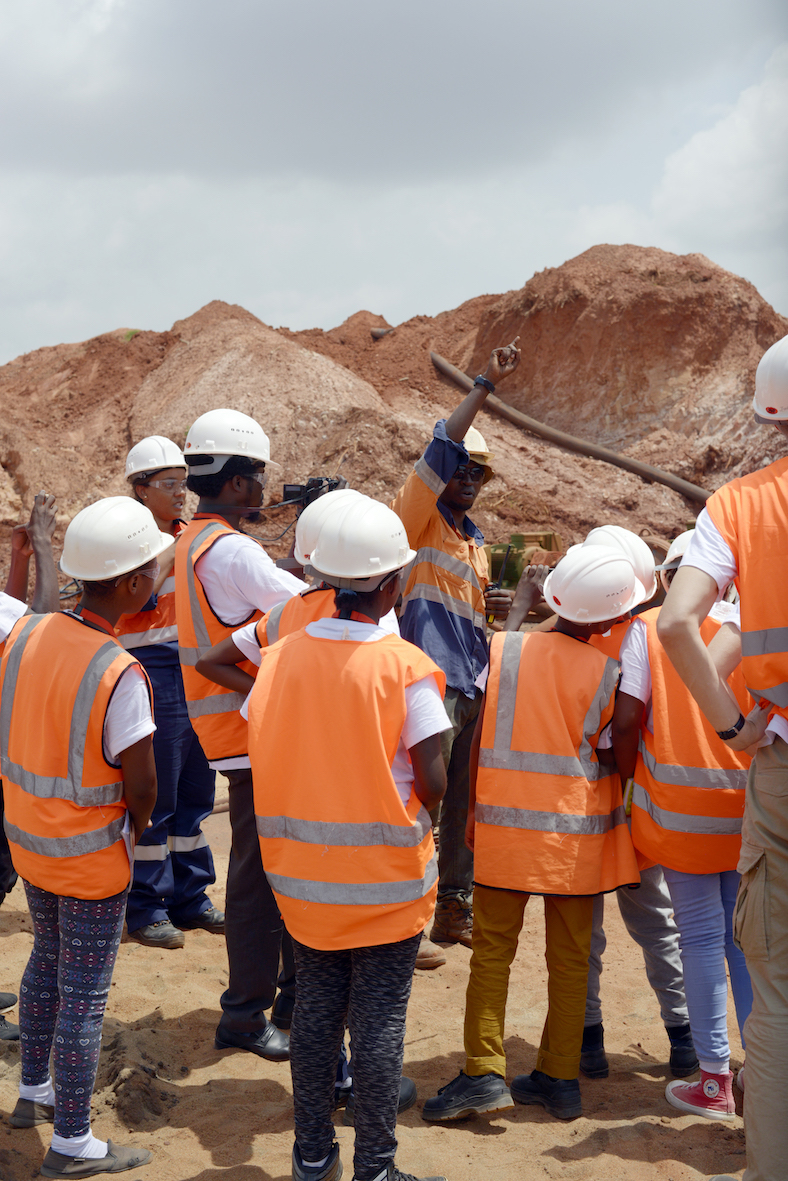
Then we came to the place where a water gun was working. We went to the gun and met Abdul, the man in charge of it. He told us that he works for four days and four nights and then goes off for four days and four nights. The water gun is used to get the mud-laden water from the mining site into the pipes to the plant.
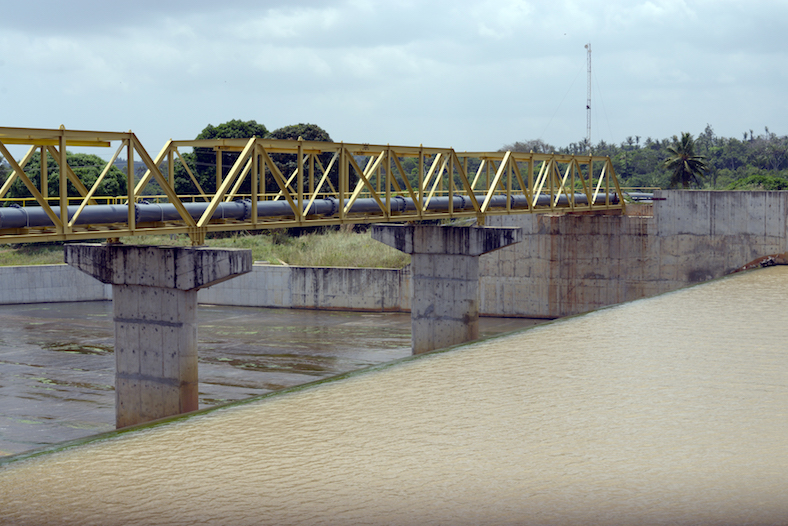

After that, we went on going round with the bus and we saw some large dunes which were like mountains. These were tailings of the mining. We also saw some people in Base Titanium uniforms planting some indigenous plants on the top of the dam of mined soil. We went to the plant and we saw how they process the material. There was a large pipe which was pouring the minerals from the water gun. Inside the plant, the minerals are separated and finally packed into the trucks.

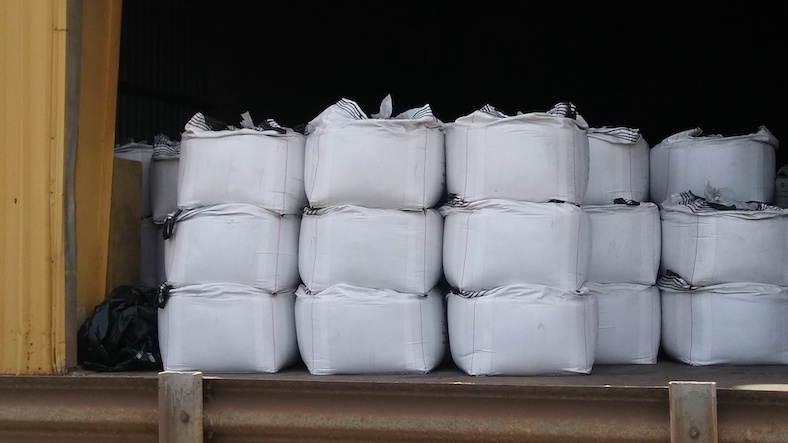
How the mining is done
In the presentation we learned that Titanium is not mined directly, but only the raw materials from which Titanium can then be made. In Kwale it is the mineral ores Ilmenite, Rutile and Zircon. Zircon is the highest quality, rarest and most expensive. Base Titanium no longer mines the three mineral ores with bulldozers, but in a hydraulic process. This means that the soil is washed up with large water cannons and a liquid mixture of sand and water is created, the so-called slurry. With large pumps, the slime is pumped through pipes into the plant. And that in a quantity of 400 tons per hour. Once there, the slurry is shaken and spun, because the sand is lighter than the mineral ores, it separates from them through the movement. Then the slurry is dried and a mixture of the three mineral ores Ilmenite, Rutile and Zircon is left over, the so-called Heavy Mineral Concentrate (HMC) and the first phase of the preparation is complete. In the second phase, the three ores are separated from one another. Since Ilmenite is very strongly magnetic, it can be split off by a magnetic process. The Rutile is then split off from the zircon by an electromagnetic process that remains. Ilmenite and Rutile are mainly exported to China, where they are processed into titanium dioxide, which is used in the manufacture of pigment and in aircraft construction. Zircon is mainly used in ceramic production in Spain and Italy.
Please read also the interview about environmental questions.
We then went to the canteen and had some lunch. The catering services were very nice. We were served with rice, chicken, greens, drinks, oranges and cakes.
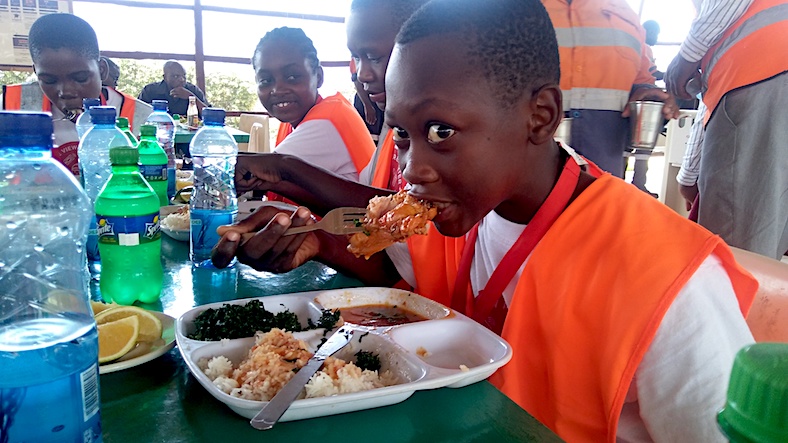
Thereafter we had an interview with Valentina about technical questions, environmental questions and questions about people. You can find the interviews below attached to this reportage. Valentina told us that she has been working at Base Titanium for two years. She explained to us the method they used to find out about the Titanium.
After that, we said goodbye and thank you to Valentina and we came back to school.



